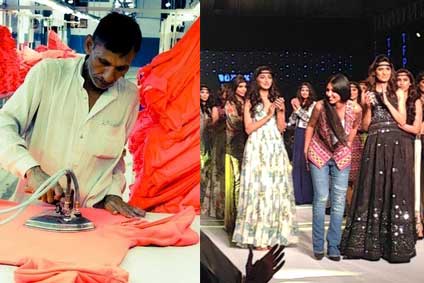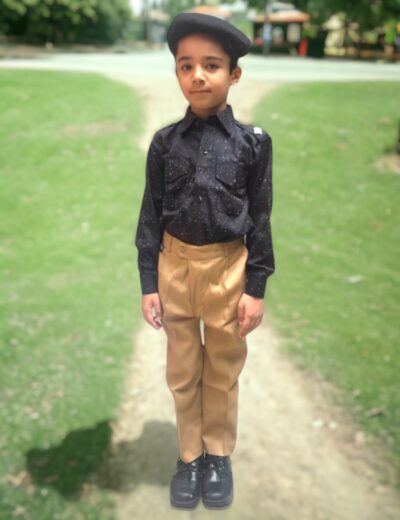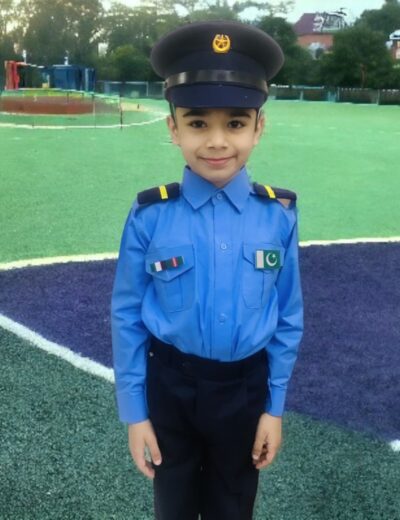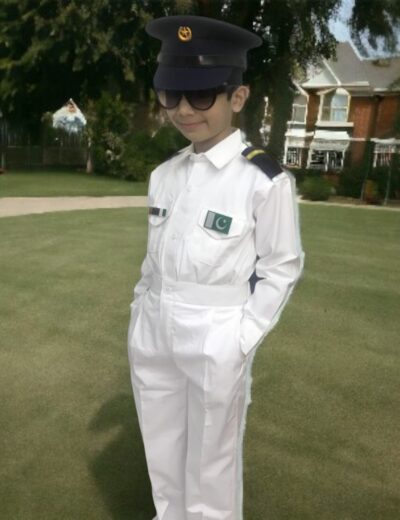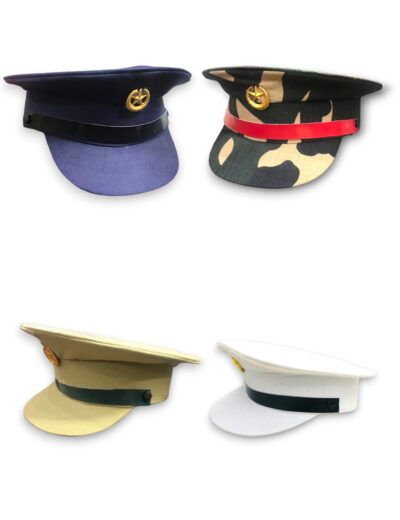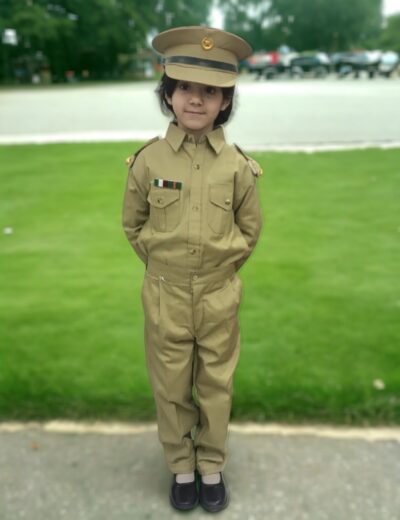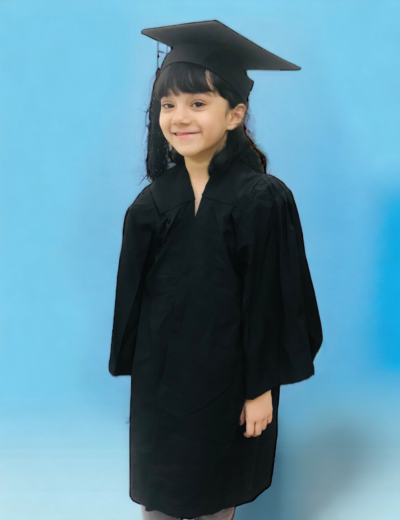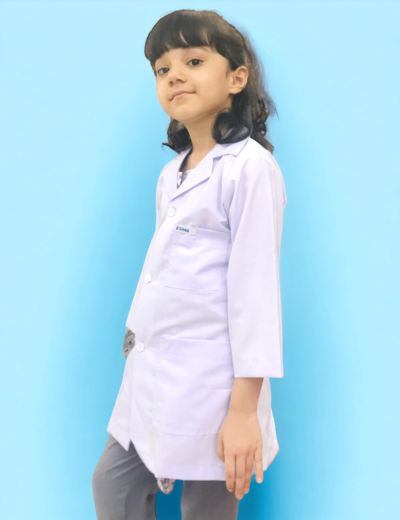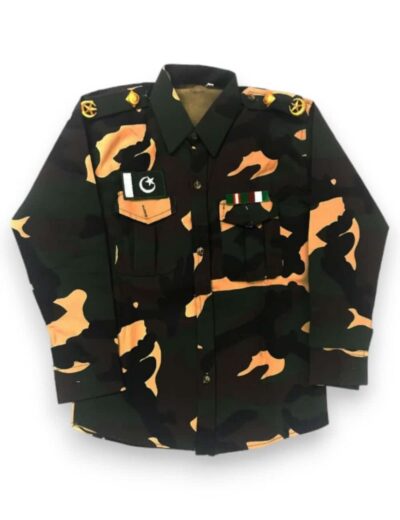The term Pakistani clothing refers to ethnic clothing commonly worn by people in Pakistan and people of Pakistani descent. Pakistani Traditional Dress expresses the culture of Pakistan, then the demographics of Pakistan and cultures from Punjab, Sindh, Baluchistan, Pashtuns and Kashmir regions of the country. The dress in each regional culture reflects weather conditions, lifestyle and a special style that gives it a unique identity among all cultures.
In Pakistani Culture most of the people in urban and rural areas wear Shalwar. it is known as the national bottom wear in Punjab, Baluchistan, Pakhtunkhwa, Sindh, and Gilgit Baltistan. Shalwar is basically a Loose pant that stitched with specifically a pure traditional Look. Most of the Govt offices and secretariat it is required to wear it since 1982.
Each province has its own style of wearing harem pants, such as Sindh Shalwar, Punjabi Shalwar, Pakhtunkhwa Shalwar, and balamite Shalwar. Pakistanis wear clothes ranging from exquisite colors and designs to various types of fabrics such as Silk, Chiffon, Cotton, etc.

Regional clothes
Baluchistan
Bloch wears a long Yam (dressing gown) like a dressing gown down to the toes, loose Shalwar, a long chaddar or scarf, a cotton Pagri, and most of the shoes that narrow on the toe. The material is a thick fabric with a very wide Shalwar to protect the dry Suleiman ridge and Haran from the hot wind.
Sindh
Sindhi people wear a version of Shalwar called Suthan with a Kamiz called Cholo. Other traditional clothing includes Sindhi cap and Ajrak beautiful designs that are produced locally. Men also traditionally wear dhoti and a long Kameez.
Punjab
Punjabi men wear a straight section of the Punjabi Shalwar, Kurta, and Shalwar, Dhoti, Lungi or Tehmat and Kurta. Other Shalwar Punjabi styles include Shalwar Pothohari, Multani Shalwar, Dhoti Shalwar, and Shalwar Bahawalpuri, which is very wide and baggy with many folds. The thin fabric turban is also worn especially in rural Punjab, where it is called Pagri. Shoes include Khussa.
Pakhtunkhwa
In Pashtun dress, people wear traditional Peshawari chappal like shoes. The traditional men’s Pashtun dress includes a partug khet, Peshawary Shalwar, and turban Perahan. Men usually wear Kufi, Peshawari hat, turban or pakul as a traditional headdress.
Women’s clothing
Shalwar
Pakistani women wear Shalwar, which is worn in various styles, colors, and designs that can be decorated with different styles and designs of embroidery. Kamiz can be of various lengths of a sleeve, length of a shirt, cuts. Boxes can be straight-cut Shalwar, Patiala Shalwar, Churidar, cigarette pajamas, tulip pants or just pants.
Dupatta
Dupatta is an integral part of the ensemble Shalwar and is considered a symbol of respect for women. Essentially, the dupatta is often seen as an accessory in current urban fashion. Most women who carry it now, wear it only as a decorative accessory; wrap around your neck or hanging over your shoulder. Most of the younger generations in urban areas do not wear it at all. Dupatta is also used by some women at the entrance to a Mosque.
It is also widely worn by women at weddings and other parties of their choice. In such cases, it is wrapped around the waist, neck or just put on the shoulder. It is used with various Fancy Suits and Gota embroidery designs.
Other Pakistani traditional dress
Pakistani Girls Traditional Dress has various variations in addition to the Shalwar, but they mostly wear them on special occasions such as weddings, engagements, Mehndi and other traditional ceremonies.
Dresses include Ghagra choli and Sarees, which are very popular, and each of its designs and colors seems unique from another, such as the Lehenga, Sari. Lehenga is another popular dress that resembles a skirt but a traditional dress. Gharara and Sharara are two identical dresses that are often worn on special occasions. Farshi Pajama is an old traditional dress that is worn sometimes. Laacha is worn in Punjab, the lower part of which resembles dhoti.
Sari is famous and widely worn in Pakistan, especially in Karachi, Lahore, and Islamabad. Pakistani Fashion Industry is very rich in aesthetic and style sense. The big fashion brands of Pakistan represent themselves not only domestically, but also internationally. The traditional style can be seen in a modern aesthetic sense, everything the designer wears.
Wedding Dresses
In Pakistan, a traditional wedding ceremony is celebrated wearing different clothes at every wedding event. Traditional Pakistani Dress For Wedding Depends upon the Type of Ceremony. In the RASM-e-Heena function (Mendhi), men wear an embroidered kurta in sparkling colors with a simple Shalwar, Patiala Shalwar and a colorful scarf that they put on their shoulders and sometimes around their neck.
At some weddings, dress codes are decided before the ceremony and all the men wear the same color. Before the wedding day, the bride can wear a yellow or orange camisole, using a simple Shalwar, Patiala Shalwar, yellow dupatta, and yellow paranda.

During Baraat and Walima’s functions, the groom usually wears Kurta Shalwar or Kurta, Churidar with special Sherwani and Khussa. In the case of Barat, Grooms also wear the traditional Sehra on their head. In the new trend in Pakistan, the groom is mainly wearing Sherwani with skinny jeans that look like Churidaar pajamas. Brides usually wear expensive Lehenga or Gharara, preferably in red, burgundy and pink with heavy jewelry.
Pakistani Fashion
Pakistani Cultural Dress flourished well in the changing conditions of the fashion world. Since Pakistan arose in its fashion historically evolved from different stages and made its unique identity. At this time, Pakistani fashion is a combination of traditional and modern dresses and this has become the cultural identity of Pakistan. Despite all modern trends, regional and traditional dresses have developed their own significance as a symbol of their native tradition. This regional fashion is not static but evolves into more modern and pure forms.

Pakistan Fashion Design Council based in Lahore organizes Fashion Week and fashion Pakistan based in Karachi organizes fashion shows in this city. Merit Aisha Tammy Hack, a British trained lawyer and chief executive of Pakistan fashion, who came up with the idea for Pakistan’s first fashion week, which took place in November 2009.
Pakistan fashion industry
The Pakistani fashion industry represents Pakistani traditional dresses all over the world as cultural representatives and is the reason to introduce international trends in Pakistan. Pakistani media, film industry and the Internet have the largest role in fashion development in Pakistan. There are many television channels, magazines, portals and sites that work only for the fashion industry. Despite religious boundaries, the Pakistani Fashion Industry has become recognized worldwide through its models, designers, stylists and fashion shows.

